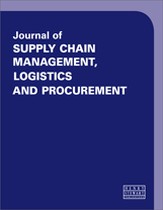The inside enemy: Weaponisation of your logistical footprint
Abstract
The intersection of digital and physical security is critical to the future security of supply chain, logistics and procurement. Considering the challenge this poses to organisations today will only expand over the next decade as the attack plan will widen fuelled by technological advances. Ultimately, the weaponisation of an organisation’s supply chain (SC), logistics and procurement systems poses a significant threat to national and global economic security. This paper will provide the reader with a better understanding of the future threats and vulnerabilities emerging within the domain as highlighted through the practice of threatcasting. The threatcasting methodology can be used by organisations, companies, governments, militaries and academia to identify, model and explore these possible threats to the supply chain and logistics and procurement systems. Finally, the paper provides a series of recommendations to counter future threats at both the individual and organisational levels.
The full article is available to subscribers to the journal.
Author's Biography
Brian David Johnson is a futurist, and as such, he works with organisations to develop an actionable 10–15 year vision. His work is called futurecasting, using ethnographic field studies, technology research, cultural history, trend data, global interviews and even science fiction to provide a pragmatic road map of the future. As an applied futurist Johnson has worked with governments, trade organisations, start-ups and multinational corporations to not only help envision their future but specify the steps needed to get there. Johnson is currently the futurist in residence at Arizona State University’s Center for Science and the Imagination, a professor in the School for the Future of Innovation in Society and the Director of the ASU Threatcasting Lab. He is also a Futurist and Fellow at Frost and Sullivan.
Natalie Vanatta is a US Army cyber officer and currently serves as the deputy Chief of Research at the Army Cyber Institute. Here she focuses on bringing private industry, academia and government agencies together to explore and solve cyber challenges facing the US Army in the next 3–10 years in order to prevent strategic surprise. She holds a PhD in applied mathematics as well as degrees in computer engineering and systems engineering. Natalie has also served as a Distinguished Visiting Professor at the National Security Agency.
Citation
Johnson, Brian David and Vanatta, Natalie (2018, June 1). The inside enemy: Weaponisation of your logistical footprint. In the Journal of Supply Chain Management, Logistics and Procurement, Volume 1, Issue 1. https://doi.org/10.69554/EQUT7054.Publications LLP
